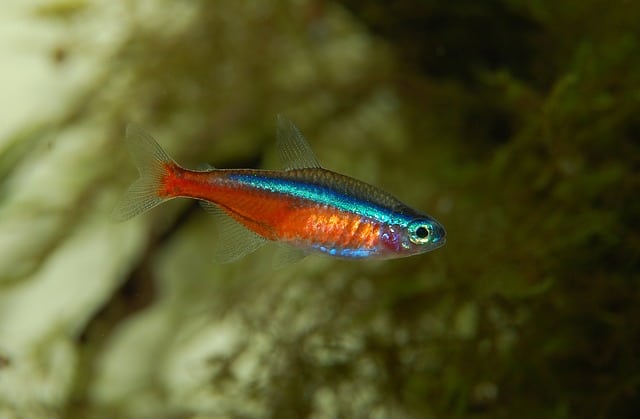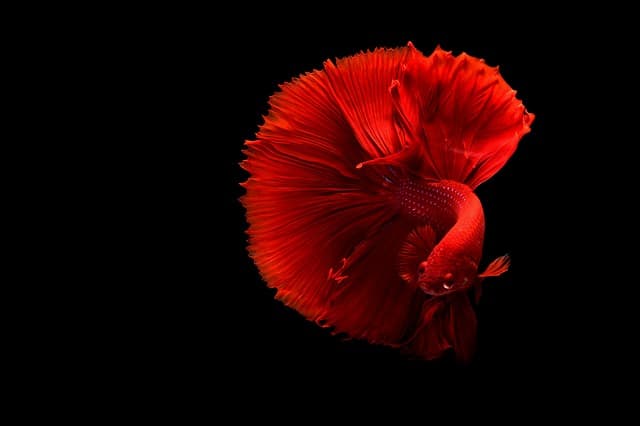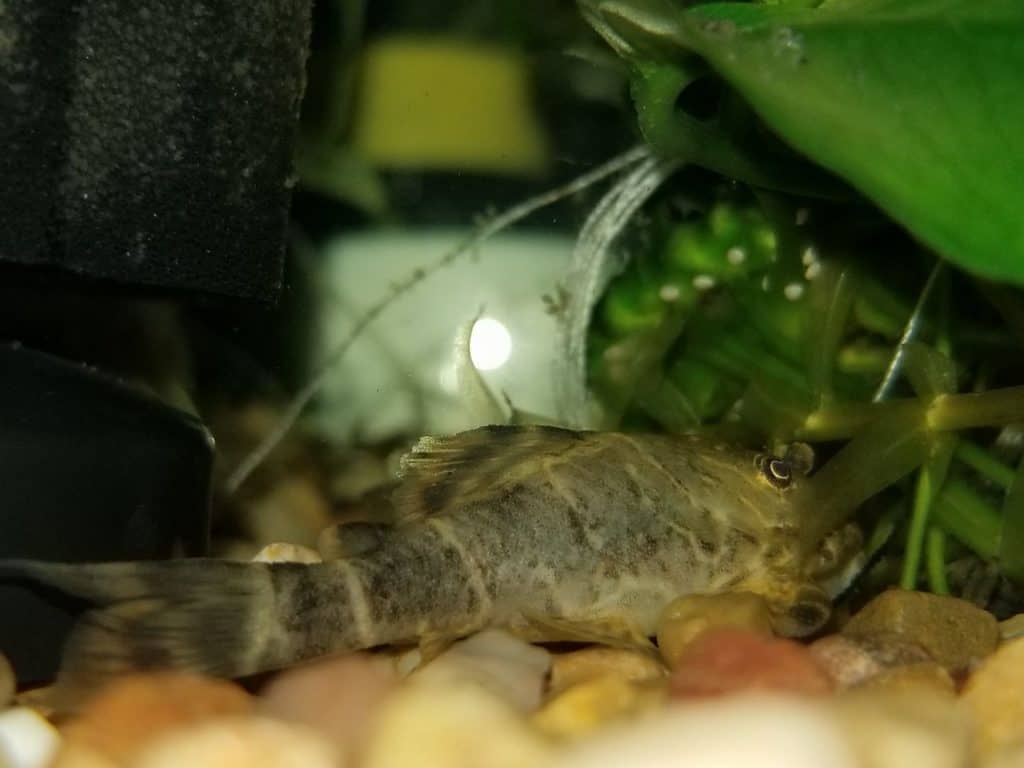Bichir fish are peculiar creatures. They look almost lizard-like with features reminiscent of an eel. Slow yet graceful as they move about their aquatic surroundings, this species is highly popular nowadays with freshwater aquarium hobbyists. If you have bichir fish in your tank, you may be wondering how to tell the males apart from the females?
To differentiate male from female bichir fish, look at the anal fins. Males have a thicker, wider anal fin than females. Another way to determine the sex of bichir fish is by the dorsal fin which is broader on males than females. As well, adult female bichirs tend to grow faster and larger than males. During the breeding season, you can tell the two apart as the males will be the ones chasing the females.
Now that you know the anal and dorsal fins (as well as its size and behavior) help you determine if a bichir fish is male or female, let’s explore this topic in more detail. Together we’ll learn how big males get as opposed to females, if one sex is more aggressive than the other, and how to increase your chances of successful breeding in captivity.
So, if you’re ready to learn more and dive deeper into the mysterious underwater world of the strange, yet fascinating bichir fish, then let’s begin!
Do Male and Female Bichir Fish Look the Same?
Immature male and female bichir fish look almost identical. When young, it’s very difficult to tell the two apart. As they grow and reach sexual maturity, the males develop wider and thicker anal fins as well as broader dorsal fins. When fully grown, females tend to be bigger and wider around the mid-section than their male counterparts.
Are Male Bichir Fish Bigger than Females?
Bichirs are quite large by aquarium fish standards. On average, they range in length from 12 to 24 inches – depending on the species – and can weigh anywhere from 7 to 10 pounds. Females tend to be bigger than males, especially when pregnant. At this time, their bellies become visibly larger and rounder than those of the males.
Are Male Bichir Fish More Aggressive than Females?
Both male and female bichirs are considered semi-aggressive in nature. When kept in an extra-large aquarium with the proper water parameters, both sexes will be more content and peaceful towards each other and fellow tankmates. Overcrowding causes stress and is a sure-fire way to increase bichir fish hostility.
Male bichirs are generally more aggressive towards females during the mating season. They’ll chase the females around the tank, bumping them with their snouts which signals a readiness to spawn. Females, on the other hand, may become more aggressive than males towards other tankmates when pregnant or when trying to find a safe place to deposit their eggs.
Can You Keep Male and Female Bichir Fish Together?
Though you can keep multiple bichir fish together, it’s recommended you do so only if you have a very large tank – 100-gallons or greater. If the aquarium is too small or overcrowded, bichirs will become territorial and aggressive, especially towards others of their kind. Keeping a single bichir fish or a mated pair is preferable at any given time.

Why Can’t You Tell Juvenile Bichir Males and Females Apart?
It’s difficult to differentiate male from female bichir fish when they’re young as they’re relatively the same size with the anal and dorsal fins looking almost identical for both sexes. As these fish age, their physical features mature and become more pronounced. Hence, it’s easier to tell males and females apart as adults.
How to Tell when Bichir Fish are Ready to Breed?
When bichir fish are ready to breed, you may notice the male chasing the female frantically about the tank. He may even bump into or nudge her with his snout. This behavior typically occurs for a day or two. After spawning, the female will search the tank for a place to lay her eggs, likely among plants or sheltered areas in the tank.
Can Bichir Fish Breed in Captivity?
Bichir fish are generally quite difficult to breed in a captive environment. In fact, some species have yet to be bred successfully in an aquarium! The ‘easiest’ ones to breed in a tank are the Senegal or grey bichir fish. Their average lifespan is 10 to 15 years in captivity, though females tend to live a bit longer than males.
How to Improve the Chances of Successful Bichir Fish Breeding?
It’s often difficult to breed bichir fish successfully in captivity. However, to improve your chances, consider adding extra plants or spawning mops to the tank. The addition of thick, lush greenery helps provide cover and a safe place for females to lay their eggs. Note that anywhere from 100 to 300 eggs are deposited in a single spawning event!
Slightly warmer water temperature also helps induce spawning behavior in bichir fish. This tropical fish prefers brackish conditions ranging from 75- to 80-degrees Fahrenheit. Increasing the environment to 82- degrees will signal to the fish it’s time to spawn. As well, since this species is nocturnal and prefers to breed at night, reducing the aquarium light from 8 to 6 hours or using a blue light is recommended.
Feeding bichir fish a varied, high-quality diet of meaty, live foods may also increase spawning success. This species is carnivorous and likes to feast on brine shrimp, bloodworms, baitfish, invertebrates, and crustaceans. Offering bichirs a little extra food more often may trigger mating behaviors in both males and females.
Since bichirs are known to eat their own eggs, to improve your chances of successfully breeding, it’s imperative that you remove the parents from the community tank and place them in a quarantine tank once the eggs have been deposited and fertilized. When the babies hatch, catch them in a fry net and place them in the quarantine tank while returning the parents back to the community tank.
Conclusion
In summation, juvenile male and female bichir fish look almost identical and can only be differentiated once they reach sexual maturity. Adult males have thicker, wider anal fins and broader dorsal fins. Females, on the other hand, tend to grow quicker and are often bigger than males. Their behavior when mating will also help you tell them apart as the males will be the ones chasing the females.
I hope this article has been of help to you and answered your questions regarding how to distinguish male from female bichir fish. Thanks for reading and good luck with your aquarium hobby!






